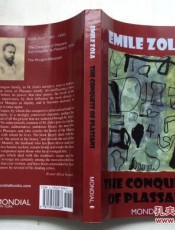in one of the addresses delivered at the time of padre coloma's admission to the real academia espa?ola there is a reference to jeromín, as this story of don john of austria is called in spanish, which says that it awakes great interest in the reader by inaugurating a new type of book, half novel and half history. this seems too true a description of it not to be quoted here.
in his preface the author states that he does not propose to delve into any deep problems, or to put forward unknown facts about personages already judged at the bar of history. all the same, i think that much in this book will be fresh to english readers, notably, perhaps, the fact that an "auto da fe" consisted in hearing the sentences pronounced on the prisoners of the inquisition, not in witnessing their execution, and that in most cases the condemned were garrotted before being burnt.
many of the illustrations will also be new to most people. through the kindness of the duke of berwick and alba the two pictures of the "gran duque" in his palace at madrid are reproduced with their history. i am indebted to colonel coloma for the picture of antonio pérez and the one of luis quijada, photographed specially for this book. se?or de osma was good enough to send me the autograph of don john's mother, which proves her to have been a woman of at least some education. from him, too, comes a most interesting specimen of don john's writing—the postscript to the dispatch announcing the battle of lepanto.
of the more familiar illustrations it can surely weary no one to be reminded of how jeromín pictured his father to himself, or how philip ii, "reyna ysovel," prince carlos, and others appeared to the blue eyes of the hero of lepanto.
i disclaim all responsibility for the views, historical or otherwise, expressed in this book, but if i have failed to reproduce a vivid picture of life in old spain, it is solely the fault of my prentice hand.
as on the walls of some tapestried chamber the author displays the story of don john of austria from his engaging childhood to his saintly death. the light as it shines on this prince charming, also falls on those great ones of his time who were his friends or foes, and on the multitude of their servants and followers, lingering most lovingly on beautiful do?a magdalena de ulloa, as it glints on the golden texture of her unselfish life. in the woof of the background the author has woven many homely touches, which seem to make the figures live again, and, shaking off the dust of more than three centuries, to leave the arras as in some pavillon d'armide.
has the turning of the hangings broken the spell? as i cannot but remember that cervantes, shrewdest of observers, has said that translating from one language to another is "like one looking on the wrong side of flemish tapestry; although the figures are seen they are full of threads which blur them, and the smoothness and bloom of the surface are not seen; not for this" he, however, adds encouragingly, "do i wish to say that this exercise of translating is not praiseworthy, because a man may spend his time in other and worse ways." ojalá! that any possible reader of this book may not have cause to doubt the truth of this last axiom.
my best thanks are due to padre coloma for his courtesy in allowing me to translate this work, to colonel coloma for the trouble he has taken for its welfare, to se?or de osma for all his kindness, to doctor de alcázar y polanco and mr. medd, and last, but not least, to my husband for all his help.
a. m. m.
